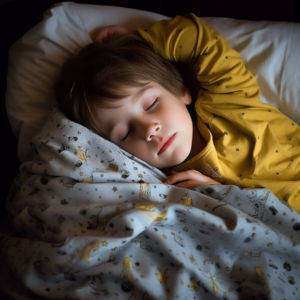Physical activity is a cornerstone of a healthy lifestyle, and its benefits extend beyond physical fitness, influencing various aspects of well-being, including sleep quality. For children, engaging in regular physical activity is not only crucial for their overall development but also plays a significant role in promoting restful and rejuvenating sleep. In this guide, we explore the relationship between physical activity and sleep, shedding light on how exercise contributes to better sleep for children and offering practical tips for parents to incorporate active habits into their child’s routine.
Introduction
Active Bodies, Restful Sleep: Unveiling the Connection
Understanding the intricate connection between physical activity and sleep is essential for parents seeking to optimize their child’s well-being. This guide aims to explore the multifaceted relationship between exercise and sleep, providing insights into how an active lifestyle contributes to better sleep for children.
1. The Impact of Exercise on Sleep Architecture
Understanding the Sleep-Enhancing Effects
Exploring the physiological changes that occur during exercise, including the release of endorphins and the regulation of stress hormones, and how these changes positively influence sleep architecture.
2. Timing Matters: Exercise and Circadian Rhythms
Strategizing Activity Timing for Optimal Sleep
Discussing the influence of the timing of physical activity on circadian rhythms and sleep-wake cycles, emphasizing the benefits of consistency in exercise routines.
3. The Role of Outdoor Play
Sunlight Exposure and Sleep Regulation
Highlighting the importance of outdoor play in promoting exposure to natural sunlight, which positively influences circadian rhythms and contributes to a more synchronized sleep-wake cycle.
4. Types of Exercises that Promote Sleep
Identifying Sleep-Supportive Activities
Providing examples of exercises that are particularly beneficial for sleep, such as aerobic activities, strength training, and activities that promote flexibility and relaxation.
5. Managing Screen Time and Sedentary Behavior
Balancing Active Time with Screen Time
Discussing the potential impact of excessive screen time and sedentary behavior on sleep quality and offering strategies for maintaining a healthy balance.
6. Establishing Consistent Exercise Routines
The Role of Routine in Sleep Enhancement
Emphasizing the importance of establishing consistent exercise routines, both in terms of timing and types of activities, to support a child’s overall sleep health.
7. Encouraging Team Sports and Social Interaction
The Social Component of Exercise
Highlighting the benefits of team sports and group activities in fostering social interactions, contributing to emotional well-being, and indirectly promoting better sleep.
8. Recognizing Individual Preferences
Tailoring Activities to Children’s Interests
Encouraging parents to consider their child’s preferences and interests when selecting activities, promoting a positive attitude towards exercise.
9. Addressing Sleep Challenges with Physical Activity
Exercise as a Complementary Approach to Sleep Issues
Discussing how regular physical activity can be utilized as a complementary strategy for addressing common sleep challenges, such as difficulty falling asleep or nighttime awakenings.
10. Fostering a Lifelong Appreciation for Exercise
Building Foundations for Healthy Adulthood
Emphasizing the role of childhood habits in shaping lifelong attitudes towards exercise and promoting overall health and well-being.
Conclusion
Active Today, Restful Tonight: A Holistic Approach
In conclusion, the relationship between physical activity and sleep underscores the importance of a holistic approach to children’s health. By integrating regular exercise into a child’s routine, parents can contribute not only to physical well-being but also to the promotion of better sleep, setting the stage for a healthy and thriving life.
Encouraging children to embrace an active lifestyle fosters habits that extend beyond the immediate benefits, creating a foundation for lifelong well-being.

